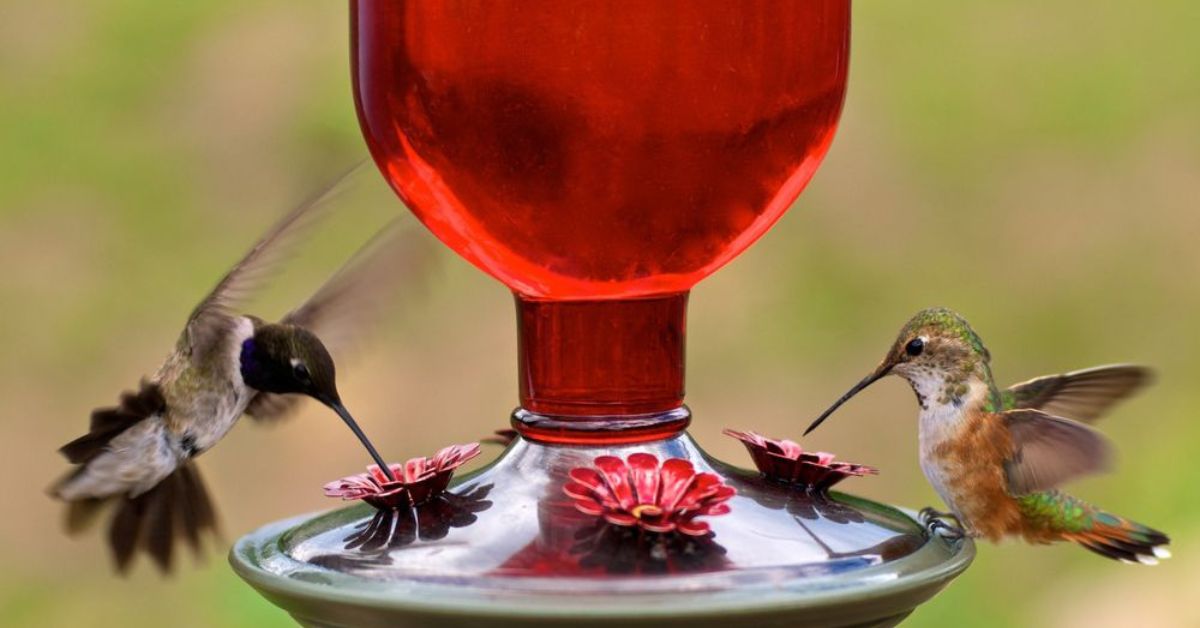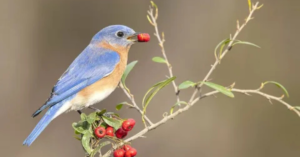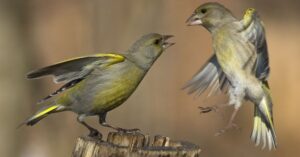Ants may be small, but their presence around your hummingbird feeder can cause big problems for both you and your avian guests. These industrious insects often swarm feeders, stealing nectar and making it difficult for hummingbirds to feed.
In this article, we’ll delve into natural solutions to keep ants away from hummingbird feeders without resorting to harmful chemicals.
1. Why Ants Are Drawn To Your Hummingbird Feeder
1.1 The Sweet Temptation: Nectar As An Ant Magnet
Hummingbird feeders are designed to attract these vibrant birds with their sweet nectar, but this sugary solution also acts as a siren call for ants. The very composition of the nectar- rich in sucrose—creates an irresistible lure for these industrious insects.
Ants possess a keen sense of smell, allowing them to detect even the faintest trace of sugar from considerable distances. Once they find a source, they communicate the discovery to their colony, leading to a rapid influx of eager foragers.
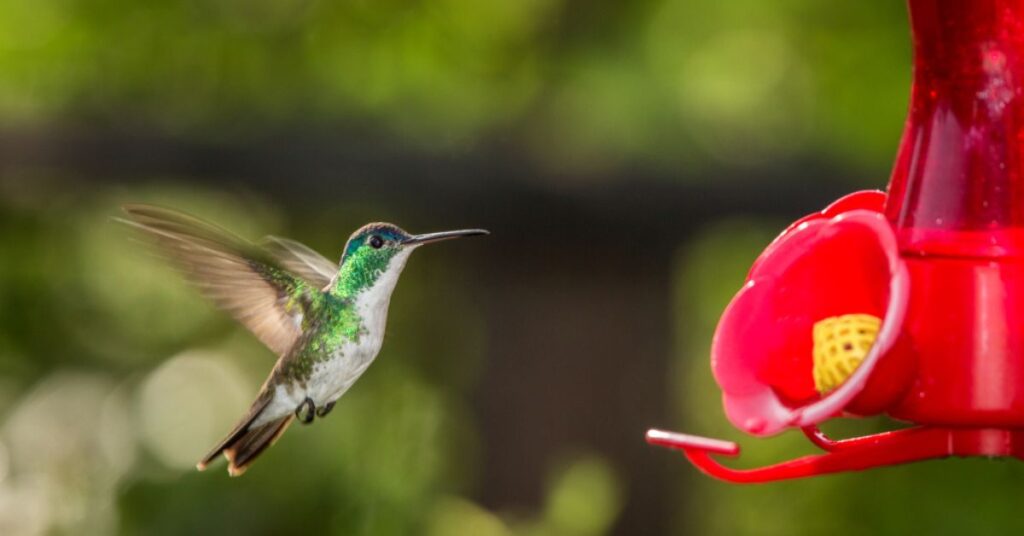
1.2 Understanding Ant Behavior Around Feeders
Ants are often drawn to hummingbird feeders due to their insatiable quest for sugary sustenance. The nectar-filled reservoirs of these feeders offer a rich source of carbohydrates, making them irresistible to ants.
Their keen sense of smell allows them to detect the sweetness from considerable distances, leading them on a determined march toward their newfound treasure. Once they discover the feeder, they leave behind pheromone trails, which guide fellow ants to the food source, creating a bustling highway of activity.
2. Natural Strategies To Keep Ants Away From Hummingbird Feeders
2.1 Installing Ant Moats: A Simple Yet Effective Barrier
One of the most effective natural strategies to keep ants out of your hummingbird feeder is by installing an ant moat. This simple yet ingenious barrier creates a protective water-filled ring around the feeder, making it nearly impossible for ants to cross over.
When setting up your ant moat, ensure it’s securely attached to the feeder’s base and filled with water. A few drops of vegetable oil on the surface can further enhance its effectiveness, creating a slippery barrier that deters even the most determined ants.
Consider positioning your feeder away from potential ant trails or nests. Elevating the feeder on a pole with a built-in moat can significantly reduce the chances of an ant invasion.
2.2 Using Fishing Line To Hang Your Feeder
Using a fishing line to hang your hummingbird feeder is a clever and effective strategy to deter ants while also adding a touch of elegance to your garden. The nearly invisible nature of the fishing line creates an optical illusion that makes it harder for ants to detect the feeder, as they rely on visual cues to navigate.
By suspending your feeder with this thin, strong line, you can create a barrier that disrupts their natural paths and keeps them at bay.
When hanging your feeder with a fishing line, consider positioning it at least five feet off the ground and away from any nearby trees or structures. This height not only makes it difficult for ants to reach but also provides a safe space for hummingbirds to feed without the interference of other pests.
2.3 Creating Slippery Barriers With Petroleum Jelly Or Oil
Creating slippery barriers using petroleum jelly or cooking oil is an effective and eco-friendly method to deter ants from invading your hummingbird feeder. By applying a generous layer of petroleum jelly around the feeder’s hanging hook or pole, you create a slick surface that ants struggle to navigate.
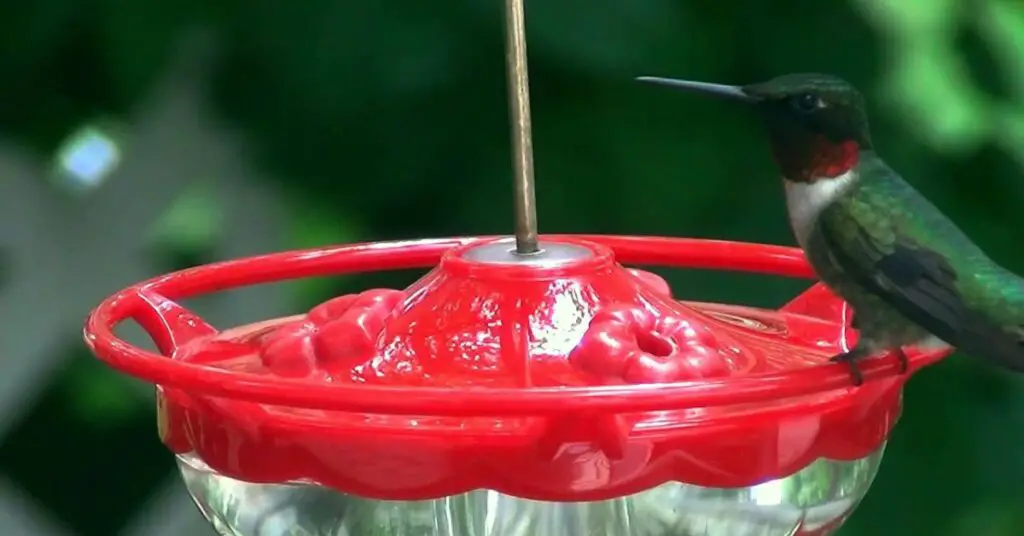
To enhance this barrier, consider using a combination of oils that have natural repellent properties, such as peppermint or eucalyptus oil. Mixing a few drops of these essential oils with your petroleum jelly can add an aromatic layer that may further deter ants while being safe for birds. Regularly reapplying the jelly or oil ensures that the barrier remains effective, especially after rain or heavy winds.
2.4 Planting Ant-Repellent Herbs Nearby
Planting ant-repellent herbs near your hummingbird feeder can create a natural barrier that deters these pesky insects while enhancing your garden’s beauty. Herbs such as mint, basil, and rosemary are not only aromatic but also possess natural oils that ants find unappealing.
3. Essential Oils: A Natural Ant Deterrent
3.1 Best Essential Oils For Repelling Ants
To repel ants naturally, essential oils offer a potent and eco-friendly solution. Among the most effective are peppermint, tea tree, and lemon oils. Peppermint oil is particularly noteworthy; its strong aroma not only masks the scent trails left by ants but also serves as a deterrent due to its intense menthol fragrance. A few drops mixed with water in a spray bottle can create an effective barrier around entry points.
Tea tree oil, revered for its antiseptic properties, also plays a role in ant repulsion. Its unique scent disrupts the pheromone trails that ants rely on for navigation, making it an invaluable tool in your pest control arsenal. Lemon oil, with its zesty fragrance, adds a refreshing twist while effectively deterring these pesky intruders.
3.2 How To Safely Apply Essential Oils Around Feeders
When using essential oils as a natural ant deterrent around feeders, it’s crucial to prioritize both effectiveness and safety. One of the most popular oils for this purpose is peppermint oil, known for its strong scent that ants find unappealing.
4. Keep It Clean: Reducing Attractants Around Your Feeder
4.1 How To Properly Clean Your Hummingbird Feeder
Cleaning hummingbird feeders is crucial not only for the health of the birds but also for maintaining a vibrant feeding environment. To properly clean your feeder, start by disassembling it completely. Use hot water and a mild soap solution to scrub all parts, including the feeding ports and any built-up nectar residue.
A bottle brush can be particularly effective for reaching those hard-to-clean spots that are often overlooked. Avoid using harsh chemicals or bleach, as these can leave residues that are harmful to delicate birds.
After scrubbing, rinse all components thoroughly under running water to ensure no soap remains. It’s also wise to soak the feeder in a solution of one part vinegar to four parts water for about 30 minutes; this helps eliminate mold and bacteria that may be lurking in crevices.
4.2 Managing Nectar Spills And Residues
Managing nectar spills and residues is crucial for maintaining a clean feeding environment that attracts hummingbirds while deterring unwanted pests. A simple yet effective approach is to position your feeder on a tray or platform that can catch any drips.
Regularly checking your feeder for leaks or overflow is another key step. If you notice any nectar pooling around the base, it’s essential to address it immediately. Consider using feeders with built-in ant moats or bee guards, as these features can help minimize spills while keeping your feathered friends safe.
5. Eco-Friendly DIY Solutions For Ant Control
5.1 Creating Homemade Ant Moats
Creating homemade ant moats is a clever and eco-friendly way to deter ants from invading your home without resorting to harsh chemicals. The concept is simple: by placing food sources, like plants or bird feeders, on elevated surfaces surrounded by a moat of water, you create a natural barrier that ants cannot cross.
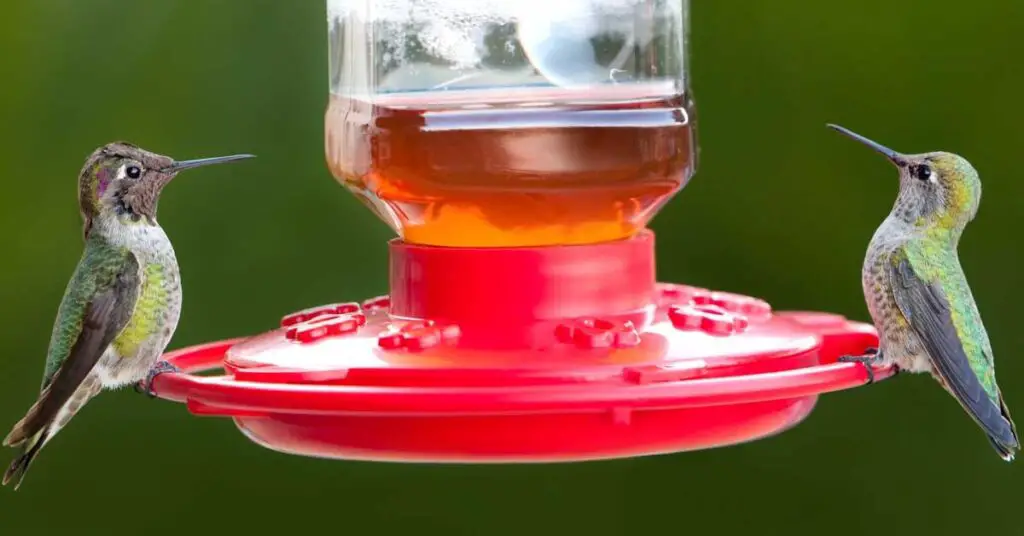
To make your own ant moat, all you need is a shallow dish filled with water and a raised platform for the food source. This design not only protects your plants but also adds an attractive element to your garden.
5.2 DIY Natural Ant Repellent Sprays
Creating your own natural ant-repellent sprays can be an empowering way to tackle pest problems without resorting to harsh chemicals. Essential oils like peppermint, tea tree, and clove not only deter ants with their strong scents but also leave your home smelling fresh and inviting. A simple mixture of water and a few drops of these oils in a spray bottle can create an effective barrier.
6. Understanding Regional Challenges In The USA
6.1 High-Ant-Activity Zones: Southern USA Tips
High-ant-activity zones in the Southern USA present unique challenges for homeowners and outdoor enthusiasts. With species like fire ants and carpenter ants thriving in the warm, humid climate, understanding their behavior is crucial for effective management.
Fire ants are notorious for their aggressive nature and painful stings, often building large mounds in open areas. Recognizing these mounds early can prevent unpleasant encounters, especially during outdoor gatherings or family activities.
6.2 Seasonal Ant Behavior: Spring Vs. Summer Strategies
As the seasons shift from spring to summer, the behavior of ants in the USA reveals fascinating adaptations that reflect their need for survival and efficiency. In spring, when temperatures begin to rise, ant colonies emerge from their winter dormancy, driven by the instinct to forage and expand.
By summer, the dynamics within ant colonies undergo a significant transformation. With the increased heat, many species shift their strategies toward optimizing resource allocation and managing colony growth. Some ants may adopt a more aggressive stance, defending their territory against rival colonies as food sources become scarcer.
7. Tips For Positioning Your Hummingbird Feeder
7.1 Choosing The Right Location
When positioning your hummingbird feeder, consider the natural behaviors of these fascinating creatures. Hummingbirds are drawn to bright colors, particularly red, so placing your feeder in an area where it stands out against a backdrop of greenery or flowers can enhance its visibility.
An ideal spot is near flowering plants that bloom throughout the growing season, as this provides a dual food source and creates a vibrant feeding station that attracts more birds.
7.2 Relocating The Feeder To Confuse Ant Trails
Relocating your hummingbird feeder can be an effective strategy for disrupting persistent ant trails that may invade your setup. Ants are diligent workers, and once they discover a reliable food source, they’ll often create a trail leading straight to it.
To break this cycle, consider moving your feeder to a new location every few weeks. This not only confuses the ants but also keeps the hummingbirds intrigued by the fresh feeding spot, encouraging them to explore more of your garden. Placing the feeder away from ground level can deter ants, as they prefer to travel along established paths.
8. Protecting Birds While Deterring Ants
8.1 Why You Should Avoid Chemical Ant Killers
Chemical ant killers may seem like a quick fix for ant infestations, but their impact extends far beyond the intended target. Many of these substances can inadvertently harm the very birds we strive to protect.
Birds, being natural foragers, often consume insects that have been exposed to these toxins, leading to potential poisoning and disruption of their reproductive cycles.
8.2 Balancing Bird Safety With Ant Control
Finding the right balance between protecting birds and deterring ants requires a thoughtful approach that respects both the avian inhabitants and the ecosystem. Using natural deterrents, such as diatomaceous earth or essential oils like peppermint, can help keep ants at bay without posing a threat to birds.
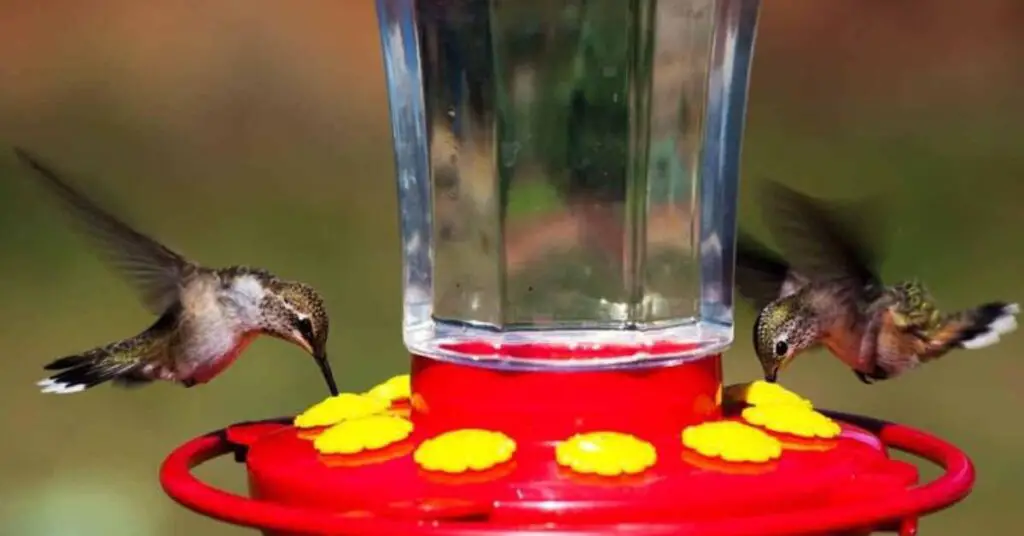
By incorporating native plants that attract beneficial insects, you can foster a balanced environment that naturally regulates ant populations while supporting local bird species.
Conclusion
Keeping ants out of your hummingbird feeder is essential for maintaining a healthy feeding environment for these beautiful birds. By implementing natural deterrents such as vinegar, essential oils, and physical barriers, you can effectively reduce ant access without harming the environment or the birds.
Regular maintenance and strategic placement of your feeder will also contribute to a successful hummingbird feeding experience. Remember, a clean and ant-free feeder not only attracts more hummingbirds but also enhances your enjoyment of nature.
FAQ’s
How To Keep Ants Out Of Hummingbird Feeders?
The most popular method to keep ants out of hummingbird feeders is to use an ant moat. This is a small reservoir filled with water that sits above the feeder, creating a barrier that ants cannot cross.
Another useful tip is to apply a thin layer of petroleum jelly around the feeder’s hanging hook or pole.
Do Ants Harm Hummingbirds?
Ants generally do not pose a direct threat to hummingbirds, but there are certain scenarios where their presence can be problematic. Hummingbirds primarily feed on nectar from flowers and insects for protein, and while ants may compete with them for food sources, they typically do not harm the birds directly.
What Are the Best Natural Ant Barriers?
To keep ants at bay, several natural barriers can be quite effective. One popular option is diatomaceous earth, a fine powder made from the fossilized remains of tiny aquatic organisms.
Another effective natural barrier is a mixture of essential oils, such as peppermint, tea tree, or citrus oils.
- Female Eastern Bluebirds - March 25, 2025
- Keep Ants Away From Hummingbird Feeders - March 25, 2025
- A Guide To Oriole Feeders - March 25, 2025
